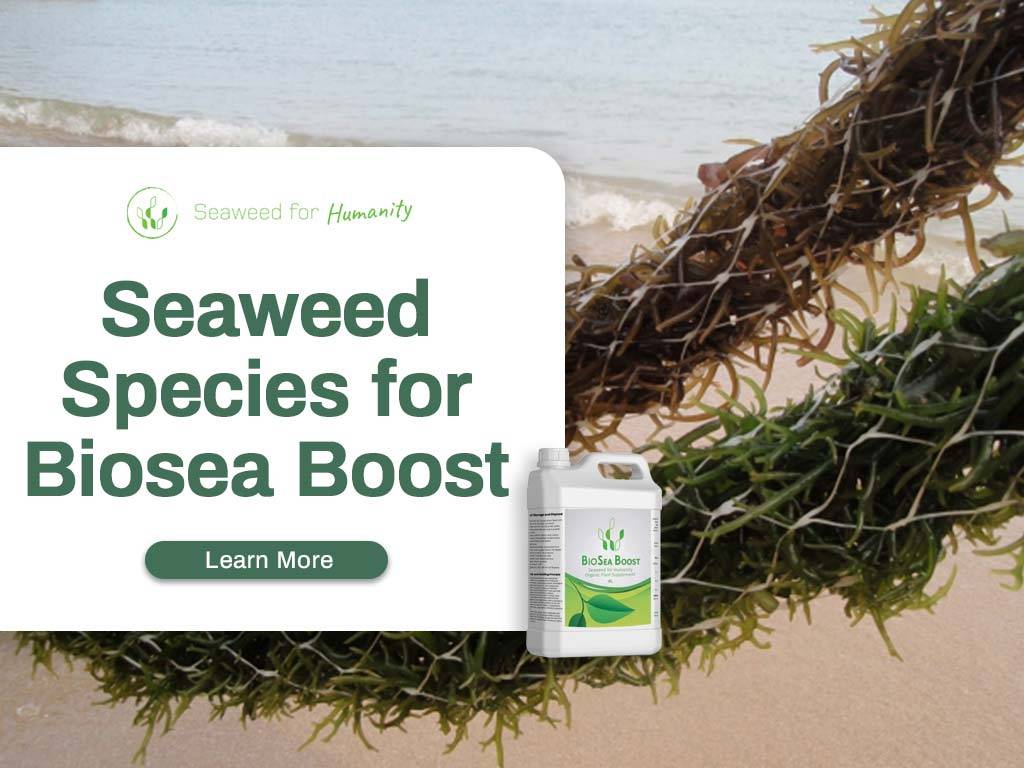What Species are in Seaweed Fertilizer? Turns out that depending on your source of supply there may be multiple species. Except for Biosea Boost.
We use Kappaphycus alvarezii – called “cottonii” in the Philippines / Indonesia / Malaysia as itis grown for its kappa-carrageenan content. Prior to 1985 the taxonomic name was Eucheuma cottonii. This is the primary species used in Pacific SeaMoss and also on the “BELFRIT” list of accepted food seaweeds. The primary carrageenan produced is kappa-carrageenan sulfated polysaccharides.
Using cottonii means that there is plentiful supply, that seaweed farmers have dual use for the seaweed and that organic farmers can rest assured there is good supply.
Biosea Boost is grown and certified organic. So you know there are control measures to ensure the fertilizer is to standard.
Seaweeds are algal organisms of which there are about 4000 species worldwide, diverse in form, biology and chemistry. Seaweeds fall into three distinct groups and are simply identified as brown, red and green seaweed. Brown seaweeds range in size from the giant kelp, which is often 20 metres long, to thick, leather-like seaweeds 2–4 m long, to small species, 30–60 cm long. Red seaweeds range from a few centimetres to about one metre in length; and in colour from red, to brownish red, to purple. Green seaweeds are similar sized to the red seaweeds. In their natural habitat, seaweeds are the natural diet of many marine grazing organisms.
References
Singh, S. & LAL, S. & SINGH, R. & ZODAPE, S.. (2017). Fertilizer Potential of Sea Weed (Kappaphycus and Gracilaria) Saps in Potato Crop. Journal of AgriSearch. 4. 10.21921/jas.v4i1.7416. (ResearchGate)
Agrifutures 2019. https://www.agrifutures.com.au/farm-diversity/cultivated-seaweed/

